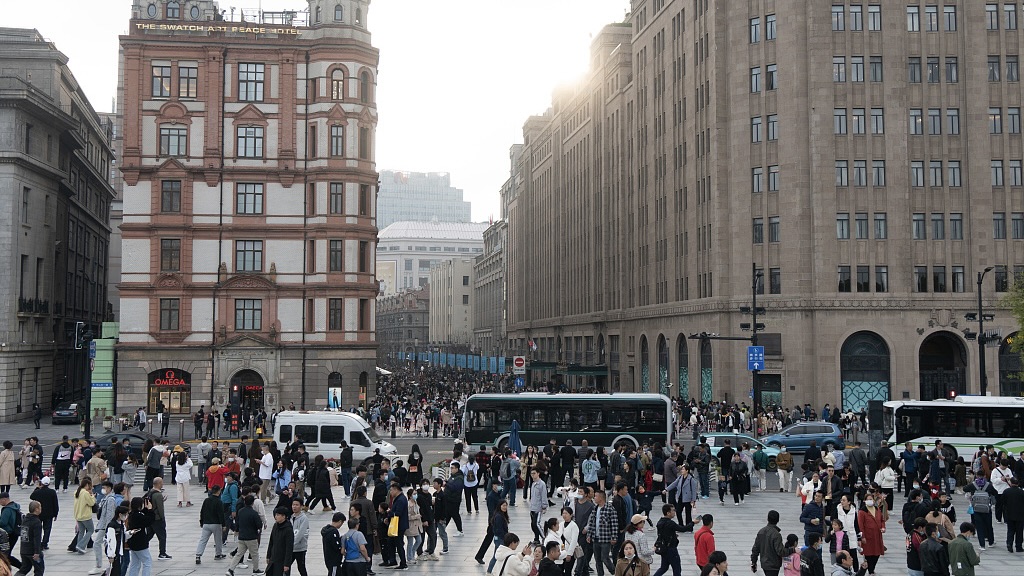
Opportunities brought by education structure change or age structure change, could be grasped by human capital cumulation, cultivation and utilization. /CFP
Opportunities brought by education structure change or age structure change, could be grasped by human capital cumulation, cultivation and utilization. /CFP
Editor's Note: Zheng Zhenzhen is a professor with the Institute of Population and Labor Economics, Chinese Academy of Social Sciences (CASS). The article reflects the author's opinions and not necessarily the views of CGTN.
The fertility rate in China dropped below replacement level in the early 1990s, and it has been stable for three decades, which means fewer newborns and a shrinking number of women of childbearing age. This negative growth has been accumulating for nearly three decades. Meanwhile China has become an aging society with a large proportion of older people, which implies a higher mortality rate. Driven by a low fertility rate and an aging population, we observed a population decline in 2022 when there were more deaths than births.
Although the size of China's population will change slightly in the next few years, up or down in relatively small numbers, the size of the labor force has already shrunk since 2012. In light of the implications and impact of these demographic changes, great efforts have been invested in industry structure transformation from labor-intensive to skill-intensive and knowledge-intensive in the past two decades. The number of those employed in tertiary sectors has increased significantly in the past decade while the size of the labor force working in the agricultural sector has been shrinking.
China has enjoyed the benefits of a demographic dividend in the past few decades, due to a combination of economic opportunities, policy reform and a large working-age population. The opening-up and reform provided enormous employment opportunities to young people, while policy reforms enabled a large flow of migrants to work in the manufacturing sector. That demographic "window" has already closed. To take advantage of further demographic opportunities, appropriate policy reform and institutional restructuring as well as external opportunities are all very important. We have to identify and capture new opportunities; for example, the possible talent dividend brought by a better-educated labor force and the second demographic dividend brought by population ageing. However, these opportunities do not transform into dividends naturally. To adapt to the demographic change and make adjustments in a relatively short period, law amendments, regulation revisions and institutional reforms have been and should be carried out intensively.
Opportunities brought by education structure change or age structure change, could be grasped by human capital cumulation, cultivation and utilization. The significant improvement in education attainment of young people will provide a better-educated labor force in the future. The gross enrolment rate for senior high school education was 91.4 percent in 2021, and the gross enrolment rate for tertiary education was nearly 60 percent (up from 30 percent in 2012). Further improvements in employment, especially youth employment, are necessary to utilize human capital more effectively, and pension reform and postponement of retirement is important to enable older workers to play a role and to contribute to development. Workplace training/retraining and lifetime learning offer a means to raise human capital of different age groups.
China still has significant room for further urbanization, as the number of urban residents is slightly above 65 percent. With further modernization of the agricultural sector, a greater proportion of the labor force could be released from farming and better and fully utilized elsewhere. Urbanization can also facilitate human capital mobilization and social mobility, not just economic growth. Many cities have already implemented favorable and friendly policies to encourage migrants to stay. This helps them to increase their income and also enables them to enjoy urban public services and welfare, so they do not have to worry about family considerations such as childcare, schools and housing. However, there is still much needed to make cities, especially megacities, friendlier to migrants.
To adapt to demographic changes, especially the rapidly aging population, and to develop work plans and systems to meet those changes, further reforms are necessary.